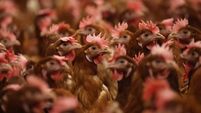Farm money advice: Climate change clues point to the shape of things to come

It’s clear from information sources ranging from the agri-taxation review to the CAP reform proposals that farmers are going to face significant external pressures from the EU, from our own government, and perhaps from consumers demanding sustainability, as Ireland struggles in meeting climate change targets.
How this will shape up for the coming decade will significantly affect how farms can operate.













